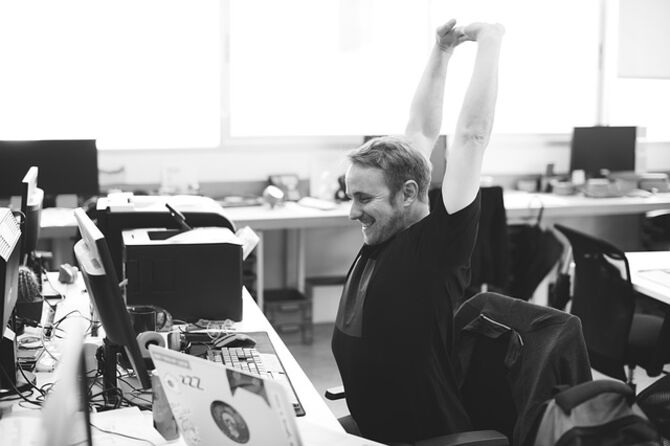New research reveals optimum work habits
A joint paper from Manel Baucells from the University of Virginia Darden School of Business and Lin Zhao of the Chinese Academy of Sciences in Beijing suggests a few simple tweaks to routines could boost productivity.

Analogue versus binary conditions
In jobs which work can be modulated, adopting a high-low-high “analogue” effort pattern was found to be the best way to manage fatigue.“The idea is to begin and end the day with maximum intensity, but take it easier in the middle,” said Manel Baucells. “For long work days, we should go marathon style: the duration of the maximum intensity will be short, and the idea is to keep a moderate steady pace during the day.”This pattern contrasts with the pattern some workers find themselves in. For those who start out slower (perhaps because they didn’t sleep much the night before or did not take a break after their last project) and proceed in a low-medium-high pattern, the end period has to include a high level of effort to make up for the slower start.It leaves people too fatigued to start the next project at a high pace, continuing the pattern of fatigue and under-performance.Read more from Relocate Global on wellbeing and productivity at work:
- Workers log on, tune in, but unable to drop out: CIPD study
- Ensuring the health and safety of globally mobile employees
- Travel Happy: Beating the stress associated with business travel
Breaks increase profits
In jobs where effort cannot be modulated, for example machine operatives, those in retail and hospitality, or that rely on mental tasks requiring constant concentration, people have to be either working 100 percent or taking a break.In this all-or-nothing "binary" case, the best distribution of effort is for workers to begin and end the day with "on" periods, but take breaks during the day.“Far from unproductive, such breaks should be seen as investments in future productivity, because they actually smooth out the fatigue level and recreate the ‘take it easy’ portion mentioned above,” said Baucells.Taking the example of exam script marking, which requires consistent and intense mental concentration, the paper’s authors show how working without breaks for 10 hours results in 15 exams graded.By contrast, allowing for three breaks, while the total working time drops to seven hours and 30 minutes, total output increases to 19 exams marked.The conclusion is that optimal breaks reduce work time and increase output. The study links with other research around neuroscience, wellbeing and mobile working patterns, which Relocate Global has been following over the past few years.Implications for the workplace
“The bottom line is, when it comes to rest and managing fatigue, the incentives of companies and workers are perfectly aligned.“Reducing fatigue increases productivity, lowers the cost of providing effort, increasing work satisfaction, lowering turnover and absenteeism, and ultimately increasing profits,” said Mr Baucells.Follow the link for more human resources news and features.
Access hundreds of global services and suppliers in our Online Directory
Get access to our free Global Mobility Toolkit

©2025 Re:locate magazine, published by Profile Locations, Spray Hill, Hastings Road, Lamberhurst, Kent TN3 8JB. All rights reserved. This publication (or any part thereof) may not be reproduced in any form without the prior written permission of Profile Locations. Profile Locations accepts no liability for the accuracy of the contents or any opinions expressed herein.




































